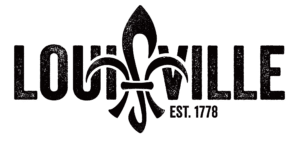Addressing the AANHPI Leadership Gap in Healthcare

In the wake of the racial reckoning following George Floyd’s death in May 2020, I pledged to use my voice on racial justice topics. When six Asians were killed in a Georgia spa in March 2021, I discussed my own experience as an Asian American—something I had never done before. I vowed to shine a light on issues that Asian Americans, Native Hawaiians, and Pacific Islanders (AANHPI) face. Anti-Asian violence is not new but has surged since the COVID-19 pandemic began. From 2021 to 2022, Asian hate crimes increased by 339 percent, and attacks on Asian Americans continue.
To support greater representation and inclusion of diverse voices, understanding Asian American challenges is important. We must include AANHPI when considering ways to increase representation, advancement, and belonging for all people of color. Historically, Asians have often been overlooked, excluded, or made invisible.
In a recent Supreme Court ruling on Affirmative Action, Asians were used as a wedge. The model minority myth paints Asian Americans as polite, compliant, and successful due to hard work and talent. This stereotype is harmful, overlooking the depth and breadth of the Asian American experience and the discrimination against us. It obscures real challenges Asians face and erases AANHPI from discussions about racism.
Allegra Tasaki, communications director of the National Association of Bond Lawyers and member of the AANHPI Advisory Group states, “Representation matters for a host of important reasons we’ve all heard: visibility and role models, breaking stereotypes, diversity of perspectives, improved work place culture, equity and social justice, market relevance (companies/organizations are serving a more diverse population), and a more global approach to conducting business and communications development. But what does this really mean? It means one thing—innovation. That can’t happen without having multiple perspectives represented. It is the ONE thing that this country is built upon; different people from different places (background, physical abilities, geography, etc.) creating, iterating, and evolving new ideas. Without representation, we severely limit and slow progress and innovation.
Data Shows a Leadership Gap
To supplement my experience, I dug into the research. Asian Americans hail from over 50 countries, showcasing diverse incomes, immigration statuses, and education levels. And recently, the Native Hawaiians and Pacific Islanders have been included. The term AANHPI is commonly used, however, the reported data may not be representative of all three groups and often refers only to Asian Americans or a combination thereof.
A recent STAT article titled, “Asian American Doctors Overrepresented in Medicine and Largely Left Out of Leadership,” uncovered the lack of AANHPI representation in medical leadership. More broadly, a recent McKinsey & Company study showed a decline in senior representation of Asian American employees, with Asian women experiencing the greatest decrease. The study further shows that:
- Two percent of non-profit CEOs and board chairs identify as AAPI.
- Three percent of Board members identify as Asian.
- Less than 1% of CEOs, board chairs and board members report as Native Hawaiian and Pacific Islander.
When looking at the American Society of Association Executive (ASAE) membership, AAPIs constitute only 3 percent of those reporting race, versus 7% of the US population. As a result, an AANHPI advisory group has been formed and has developed a plan to increase representation and advancement at all levels. Karyn Nishimura Sneath FASAE, director of education for the Society of Professional Journalists and a member of ASAE’s AANHPI Advisory Group shared, “Representation matters because WE matter. When we’re not (literally) seen, people often make their own assumptions and stories about why Asians aren’t visible. That can lead to perceptual barriers to membership, engagement, and volunteerism.”
Tyler Eble, president of Association Development Solutions, based in Naperville, Ill. When asked about representation, Eble responded: “Diversity and inclusion are too often discussed at a tactical level as if there are certain metrics that indicate success or failure.” He continued, saying, “This distracts from the value of representation and slows progress. A true culture shift requires a genuine understanding of the range of benefits of having broader representation.”
A few years ago, we looked at creating an Asian American advisory group at Association Forum. However, when I, as an Asian American woman, scanned my contacts in LinkedIn, I realized that of the 1,000+ connections less than 1 percent of my association colleagues were Asian. I knew only two other CEOs who were Asian American, and both were men. None looked like me.
Words Matter
While many still use the term “minority” to describe people of color, it is a term that evokes a lesser status. It’s also inaccurate in some states. In Hawaii, District of Columbia, New Mexico, Texas, and Nevada, people of color are the majority. Language continues to evolve, and we need to evolve with it. Currently, ‘historically minoritized and marginalized groups’ is an option that acknowledges what has happened rather than diminishing those to whom it happened.
Chicago is the healthcare association hub, There are nearly 2,000 associations headquartered in and around the city, and many of them are healthcare related. At both trade and professional associations, workforce development is a key area of focus. Many medical associations include leadership development programs, with some targeting diversity.
The term “underrepresented in medicine” (URiM) refers to groups with larger professional representation than in the general population. According to the American Academy of Medical Colleges in 2018-2019, 21 percent of medical school graduates were Asian versus 7 percent of the US Population. Programs that focus on URiM aim to close the gap for those who participate in medicine at a lower rate than represented in the population. However, these programs might exclude Asian Americans, even if they face discrimination, experience the highest level of micro-aggressions from patients, and hold few leadership positions in medicine. There is a bamboo ceiling, a term that Jane Hyun coined in her book Breaking the Bamboo Ceiling: Career Strategies for Asians, which underscores the barriers Asians face as they advance in their careers.
Supporting AANHPI
An Associations Now article during Asian American Heritage month cited three areas of focus to create greater belonging:
- Policies. Examine current policies and antidiscrimination, harassment, and microaggression to them. Ensure there are procedures to address and handle issues. Embrace and strengthen diversity and educate others.
- People and Partnerships. Create opportunities for special interest and resource groups to meet. Connect AAPIs with coaches and professional partners within the association, industry, and other associations.
- Place (workplace culture). Develop training opportunities to address all behaviors from outright racism to unconscious bias. Invite staff to share what makes them feel safe and invite additional ideas. Regularly assess the culture, collect feedback, and make improvements. People support what they help to create.
I recently co-trained a medical board on boosting board diversity. In preparation, we explored whether board members of color would be willing to share their experiences. An Asian American male board member shared his story with his colleagues. Opening up about his personal experience helped his peers gain a deeper understanding of the challenges he faced. He had not previously shared his experience and his peers were unaware of the prejudice he faced and the hurt he experienced during medical school.
We need to continue to cultivate associations that support AANHPI representation and advancement at all levels. To break the cycle of anti-Asian violence, we need to actively share our lived experiences. His story reminds us of the power of narrative. When we are willing to share our stories and experiences, we learn from each other and broaden our understanding of unseen struggles.
This article is part of Association Forum’s Healthcare Collaborative initiative. Healthcare Collaborative is made possible by the following supporters:
Tags
Related Articles
Discover Phoenix’s Growing Reach in Healthcare
Learn more about how Greater Phoenix is one of the fastest-growing markets for life sciences...
The Power of Young Medical Professionals
How to embrace young medical professionals and the changing membership landscape.
Addressing the AANHPI Leadership Gap in Healthcare
Using our voice is more important than ever before.





